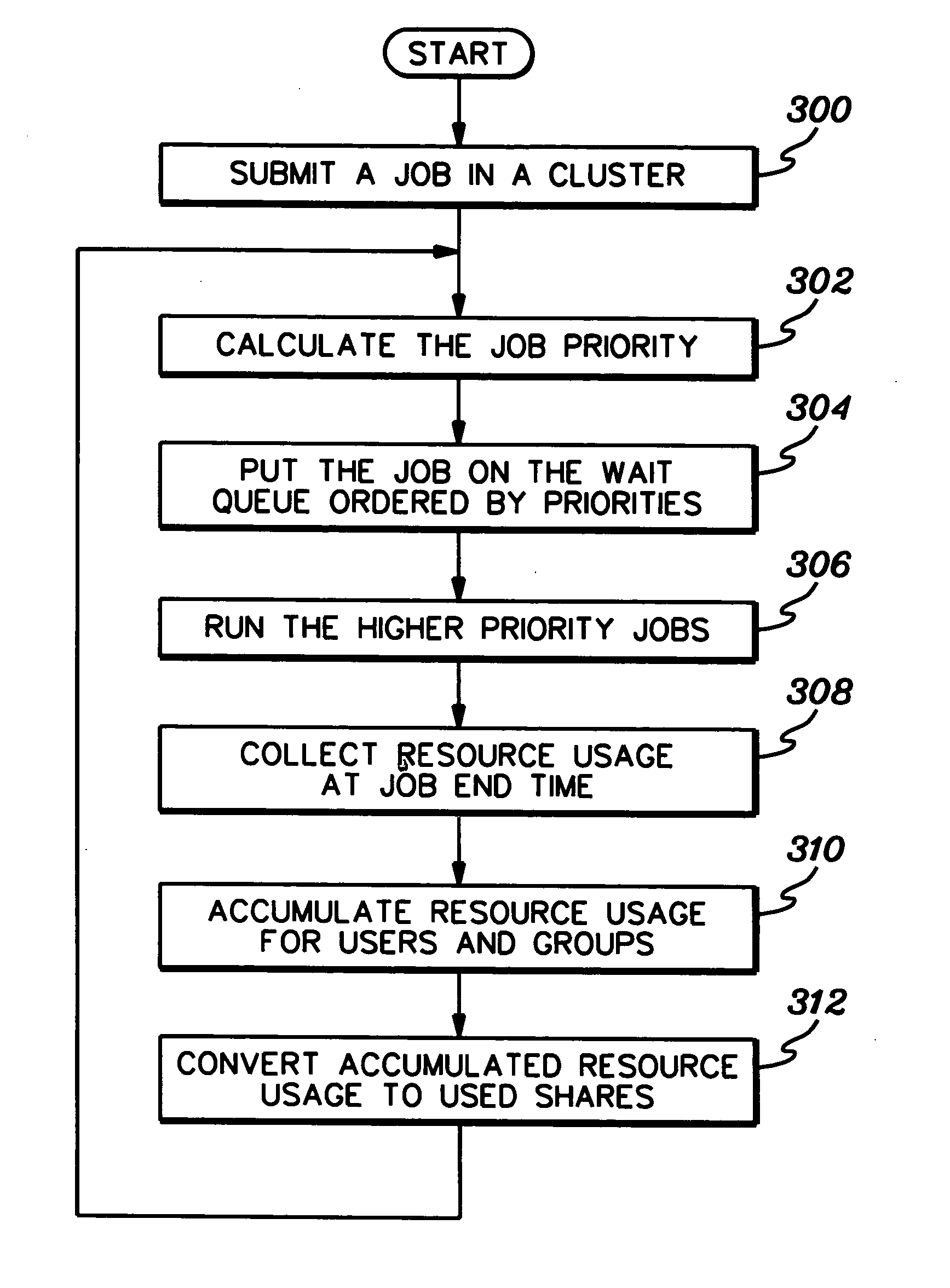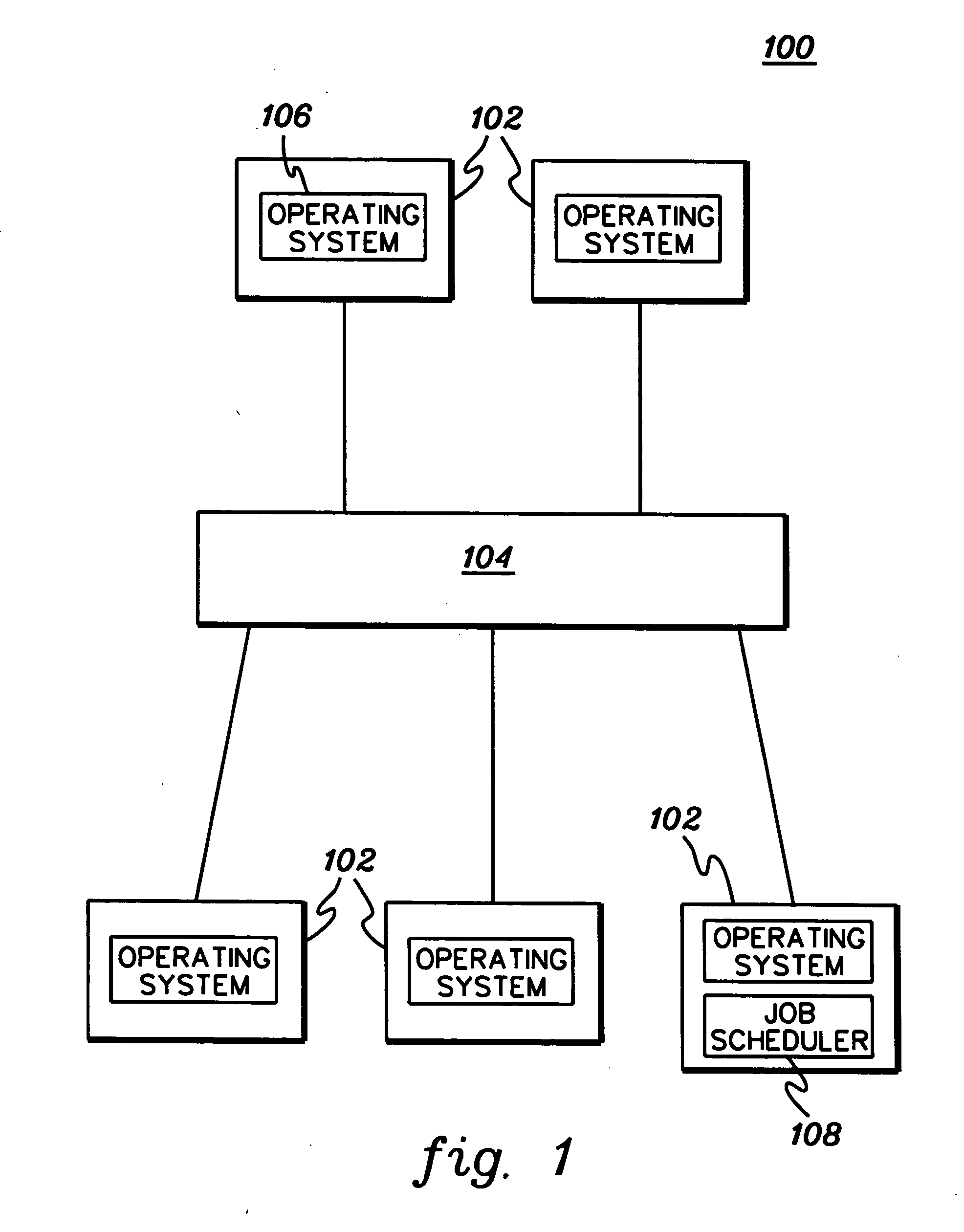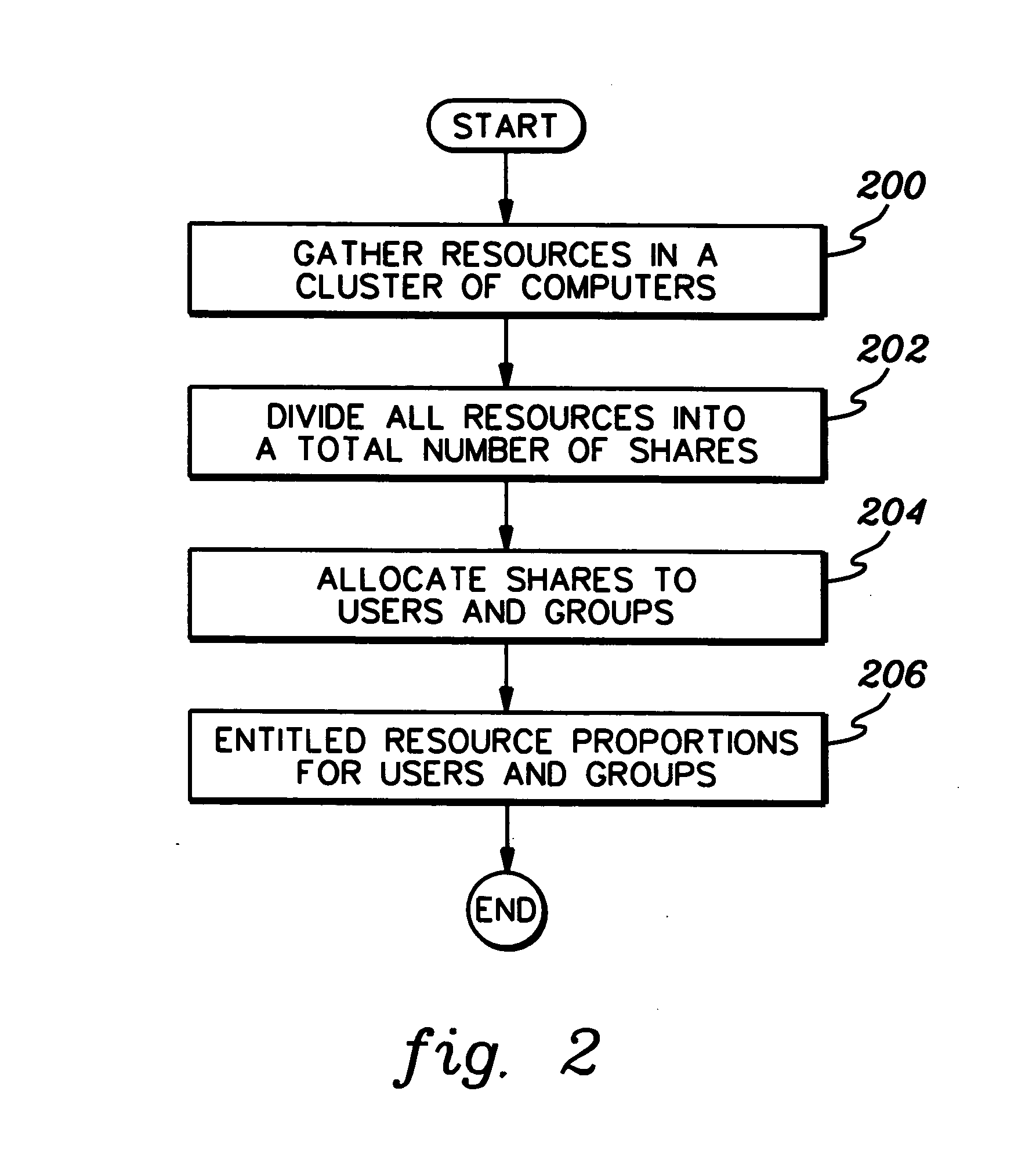Fair share scheduling based on an individual user's resource usage and the tracking of that usage
a resource usage and resource tracking technology, applied in the field of fair share scheduling, can solve the problems of unsatisfactory and undesirable scheduling for individual users, and achieve the effects of reducing the amount of historic resource usage data to track, simplifying the decay mechanism, and stable and fair scheduling
- Summary
- Abstract
- Description
- Claims
- Application Information
AI Technical Summary
Benefits of technology
Problems solved by technology
Method used
Image
Examples
Embodiment Construction
[0023] In accordance with an aspect of the present invention, a fair share scheduling capability is provided that enables the stable and fair scheduling of jobs of an individual user or group of users. The scheduling depends on resource allocation and usage by that individual user or group of users, instead of allocation and usage by other users or groups of users. Available resources of a processing environment are divided into a number of shares. These are the resources that are configured for the environment and available to be used, independent of resource consumption. A user or group of users is allocated a portion of the shares. Then, each job of the user or group of users to be executed is assigned a job execution priority. This priority is based on how many shares the user or group of users has been assigned and has used and is independent of resource usage by others in the processing environment.
[0024] Since job scheduling priority is affected by the number of shares used ...
PUM
 Login to View More
Login to View More Abstract
Description
Claims
Application Information
 Login to View More
Login to View More - R&D
- Intellectual Property
- Life Sciences
- Materials
- Tech Scout
- Unparalleled Data Quality
- Higher Quality Content
- 60% Fewer Hallucinations
Browse by: Latest US Patents, China's latest patents, Technical Efficacy Thesaurus, Application Domain, Technology Topic, Popular Technical Reports.
© 2025 PatSnap. All rights reserved.Legal|Privacy policy|Modern Slavery Act Transparency Statement|Sitemap|About US| Contact US: help@patsnap.com



